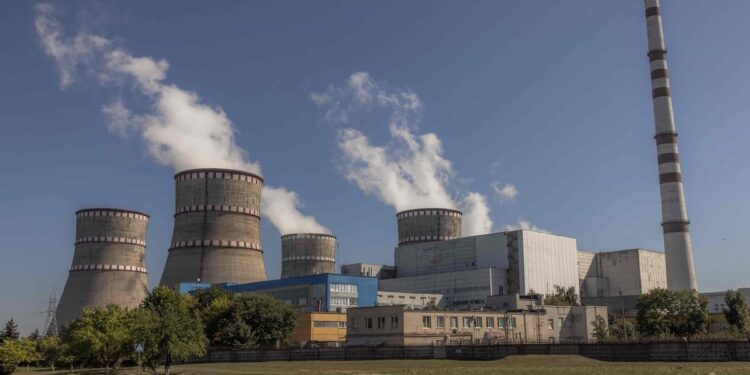The cancellation of a major project and soaring costs represent new obstacles for the nascent industry of small American nuclear reactors, where there is nevertheless still belief in the first commissioning by the end of the decade.
The year 2023 ended badly for SMRs (small modular reactors), new generation reactors considered the future of the sector, with the cancellation of the construction of the NuScale site, a start-up company in Idaho.
His project was all the more scrutinized because his SMR was the only one to have been approved by the American Nuclear Regulatory Commission (NRC).
The disengagement of certain communities and the explosion of the estimated bill, rising from 5.3 to 9.3 billion dollars, have taken a toll on the infrastructure.
“The collapse of the NuScale project should herald the end of SMRs,” even urged MV Ramana, professor at the University of British Columbia (UBC), specialist in energy security, in an article published on the Utility Dive site.
“It’s easy to focus on the negative, but there have also been a lot of positive developments” in recent months, says Mason Lester, analyst at S&P Global Commodity Insights.
He mentions the Darlington site in Ontario (Canada), still on track and whose deadline is the earliest in North America, with commissioning of BWRX-300 reactors from the joint company GE Hitachi planned for 2029.
“Subject to the green light from regulators, nuclear construction will start in 2025,” operator Ontario Power Generation (OPG) told AFP.
The Tennessee Valley Authority (TVA), a federal agency that supplies electricity to several regions in the southern United States, also invested in the development of the BWRX-300.
The NuScale file “was just one project” among others, underlines John Kotek, of the professional organization Nuclear Energy Institute.
For him, “the problem was not the initial cost of the project, but the risk of seeing it balloon.”
To avoid further disappointments, he said, “we are working with elected officials to find a way to spread the risks in order to help cross the threshold of building the first models.”
“Standardize”
“The price of steel is increasing, like that of uranium or labor,” recognizes Marcia Burkey, financial director of the start-up company TerraPower, which plans to start work on its reactor in June on the site of a coal-fired power plant at the end of its life, in Kemmerer (Wyoming).
“So I can understand that people say to themselves: here we go again with nuclear power,” weighed down by its reputation as a financial pit, says the manager.
“But we are more determined than ever and we hope that innovation will allow us to move faster” and thus reduce the bill.
Also a partner of GE Hitachi, TerraPower – supported by a group of investors, including Bill Gates – relies on so-called molten salt technology, which does not require conventional containment enclosures and which requires less materials and labor. – of work, argues Marcia Burkey.
According to her, the SMRs want to break with the traditional American nuclear industry, which has never managed to produce reactors in series, unlike France.
“To lower costs quickly, we must standardize,” insists Mme Burkey.
TerraPower’s Natrium or the MMR (Micro-Modular Reactor) of another newcomer, Ultra Safe Nuclear Corporation (USNC), were designed to be built on an assembly line.
USNC is therefore counting on the manufacture of ten MMRs per year in its Gadsden (Alabama) factory, which should open in 2027.
If China and Russia each already have an operational SMR, the United States remains better positioned than Europe in the race for small reactors, according to Sylvain Cognet-Dauphin of S&P Global Insights.
“Discussions are underway and projects have been proposed, but nothing as advanced as for (electricity suppliers) OPG, TVA or others” in North America, he said.
On the regulatory front, the House of Representatives adopted a text at the end of February to accelerate the examination of applications for SMR approval, a text which must now be reconciled with a similar proposal voted on in the Senate.
“It’s a big step” towards the commissioning of small reactors, considers Mason Lester.
And, despite the defection of communities in the NuScale file, demand is gradually emerging.
In mid-March, Google, Microsoft and the steelmaker Nucor formalized their association in the purchase of renewable energy, mentioning in particular new generation nuclear technology.
On the side of the energy supplier PacifiCorp, we are currently studying the integration of several natriums into the network.
“There is interest, but as long as it is not a reality,” describes Sylvain Cognet-Dauphin, “it remains a little difficult. (…) We have to demonstrate that it works.”



